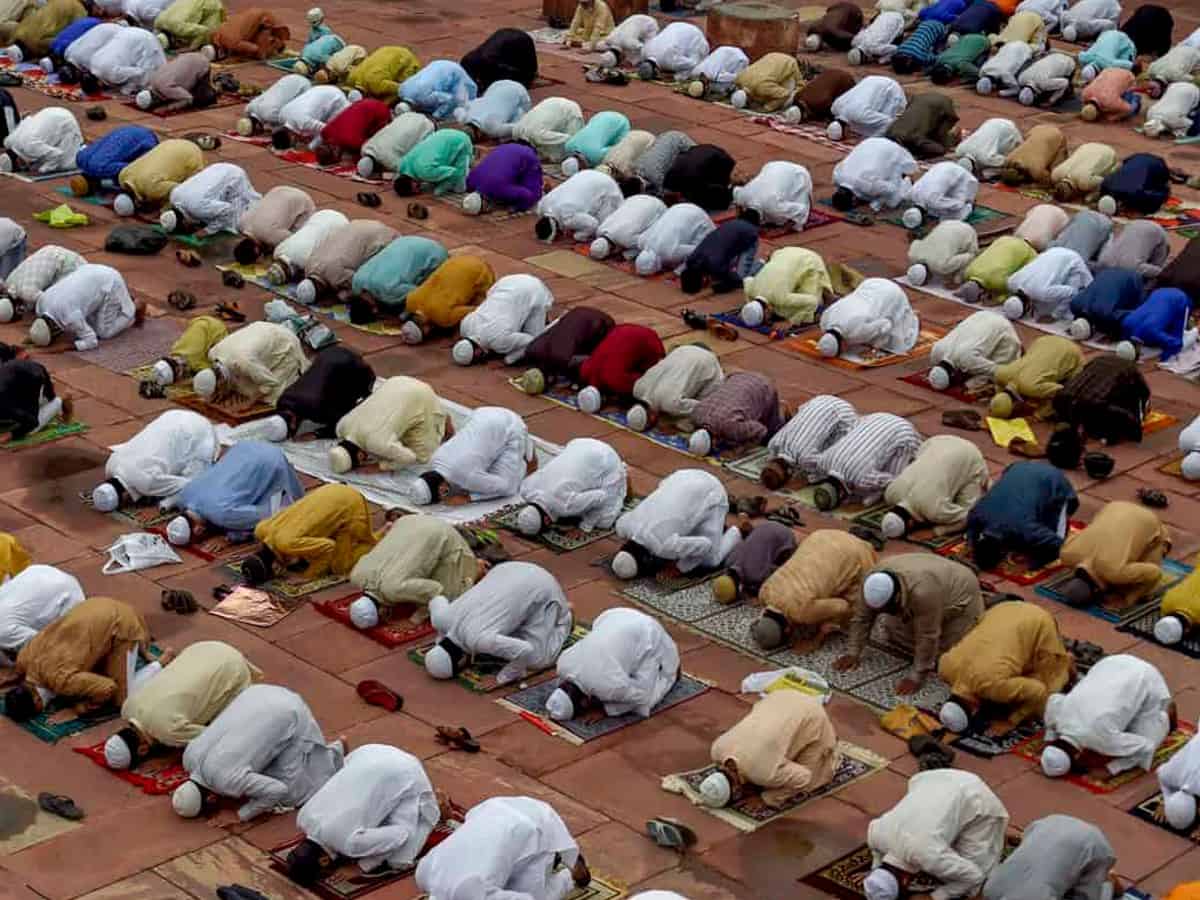
For Jammu and Kashmir, especially for the Valley, Eid-ul-Fitr is different this time. With this festival marking the conclusion holy month of fasting – Ramzan – Kashmir is celebrating it with a lot of reflection into the past. Amidst all the religiosity and festivities, Kashmir throughout the month of Ramzan looked at its political aspirations while wondering why the electricity played hide and seek at the time of “ sehri” and “ Ifitari”.
Two leaders and both of them former chief ministers – Omar Abdullah and Mehbooba Mufti – saw either the sheer incompetence of the administration or deliberate act to hurt their religious sentiments, in the power cut at the time of the start of the day and also at the time of breaking the fast in the evening. “ I don’t how else to describe it,” Omar who also is vice president of the premier political party-National Conference wondered, for he aligned this move with the ban on the loudspeakers at mosques, shutting the Jamia Masjid of Srinagar on Shab-e-Qadr and Jumat-ul-Vida . he characterized it as an “ artificial normalcy”.
It was in November 2002, within days after Mufti Mohammad Sayeed, father of Mehbooba Mufti took over as Chief Minister that he declared that there would be no power cut during the month of Ramzan. In a way, the 24×7 light across Jammu and Kashmir became synonymous with the sanctity of the holy month, wherein devotees could see light in their homes, and mosques.
The optics in Kashmir tend to have a split narration. Officials apply statistics at the yardstick to measure the sense of normalcy – on the one hand, it counted the killing of 62 militants, 47 of them locals, as a success of the anti-terrorism operations, and this is gelled with the footfall of the tourists. By one account the tourist arrivals in Kashmir have superseded all previous records. That is, tourism sector people say, that it is more than 1.2 million till date and expect the figures to cross the 2 million mark apart from 600,000 to 800,000 Amarnath pilgrims expected to visit during the Himalayan pilgrimage devoted to Lord Shiva commencing June 30 and lasting till August 11. This symbolizes a lot of normalcy with tourists filling the tourist resorts, market places and interacting with the locals. There are about 800,000 people associated with his sector – in transport, hotels, houseboats, shikaras ( luxury boats) and ponywallas, raising the stake of these people in the economic activity and interest in promoting the sense of normalcy.
There also are optics with Jamia Masjid being shut for prayers every now and then, the restriction of movement imposed Panchayat members considered vulnerable to the targeted killings by the militants.This is what betrays the fear and threats. This measure is to help secure the safety of life of Panchs and sarpanches in the militancy-infested areas, some pockets in South Kashmir. The recent spate of killings in which the militants among others targeted Panchs and sarpanches had sent a wrong message within and outside the Valley. But restriction of their movements tell the story that the real peace wherein the life can go on uninterrupted is still a work in progress.
This Eid is different as the governments, especially in the much-loved era of Atal Behari Vajpayee, there used to be the announcement of Ramzan ceasefire. That was a calculated risk – the forces were under orders not to initiate action against militants – in other words, it was called, NICO- Non-Initiation of Counter-terrorism operations. In 2000, it started with the month of Ramzan and got extended till May 31, 2001. this six-month-long cessation of operations against the militants earned Vajpayee a lot of goodwill, as the people appreciated that the government had taken a good initiative which was botched up by the militants by their acts of violence.
And, it should also be remembered that such measures had led to what is called the “ Eid-ul-Fitr” ceasefire in November 2003, the reiteration of which was made by Indian and Pakistani armies on February 25. A look back on this festival is full of lessons while the look ahead is a different time zone.



